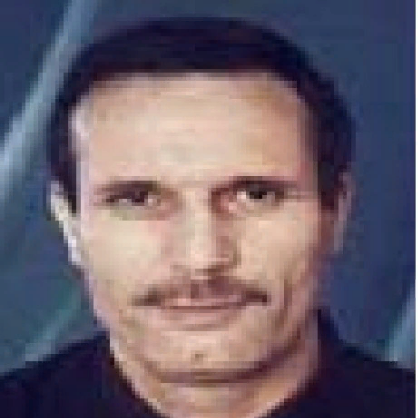International Journal of Image, Graphics and Signal Processing (IJIGSP)
IJIGSP Vol. 4, No. 4, 8 May 2012
Cover page and Table of Contents: PDF (size: 1231KB)
Morphological Segmentation of the Spleen From Abdominal CT Images
Full Text (PDF, 1231KB), PP.56-62
Views: 0 Downloads: 0
Author(s)
Index Terms
CT images, spleen segmentation, anisotropic diffusion filter, morphological filters, the watershed
Abstract
Organ segmentation is an important step in various medical image applications. Accurate spleen segmentation in abdominal CT images is one of the most important steps for computer aided spleen pathology diagnosis. In this paper, we have proposed a new semi-automatic algorithm for spleen area extraction in abdominal CT images. The algorithm contains several stages. A spleen segmentation method is based on watershed approach. The first, we seek to determine the region of interest by applying the morphological filters such as the geodesic reconstruction to extract the spleen. Secondly, a pre-processing method is employed. In this step, we propose a method for improving the image gradient by applying the spatial filters followed by the morphological filters. Thereafter we proceed to the spleen segmentation by the watershed transform controlled by markers. The new segmentation technique has been evaluated on different CT images, by comparing the semi-automatically detected spleen contour to the spleen boundaries manually traced by an expert. The experimental results are described in the last part in this work. The automated method provides a sensitivity of 95% with specificity of 99% and performs better than other related methods.
Cite This Paper
Belgherbi. Aicha,Bessaid. Abdelhafid,"Morphological Segmentation of the Spleen From Abdominal CT Images", IJIGSP, vol.4, no.4, pp.56-62, 2012. DOI: 10.5815/ijigsp.2012.04.08
Reference
[1]Campadelli. P., E. Casiraghi, and S. Pratissoli, (2008). Fully Automatic Segmentation of Abdominal Organs from CT Images Using Fast Marching Methods,” in Proceedings of the 2008 21st IEEE International Symposium on Computer-Based Medical Systems Volume 00, 2008, pp. 554-559
[2]Alireza Behrad, Hassan Masoumi, Automatic Spleen Segmentation in MRI Images using a Combined Neural Network and Recursive Watershed Transform, 10th Symposition on Neural Network Application in , Electrical Engineering, NEURAL-2010, 978-1-4244-8820-9/10/$26.00 ©2010 IEEE
[3]H.P. Ng1, S. Huang1, S.H. Ong2, 3,K.W.C. Foong4, P.S. Goh5, W.L. Nowinski1, Medical Image Segmentation Using Watershed Segmentation with Texture-Based Region Merging , 978-1-4244-1815-2/08/$25.00 ©2008 IEEE
[4]Eric Dahai Cheng, Subhash Challa and Rajib Chakravorty, Microscopic Cell Segmentation and Dead Cell Detection Based on CFSE and PI Images by Using Distance andWatershed Transforms, 978-0-7695-3866-2/09 $26.00 © 2009 IEEE DOI 10.1109/DICTA.2009.16
[5]Beucher S,Lantuejoul C, 1979: Use of watersheds in contour detection, Proceedings of International Workshop on Image Processing, Real Time Edge and Motion Detection/Estimation, Rennes, September 1979
[6]Yun Zhang, Xuezhi Feng, Xinghua Le, Segmentation on multispectral remote sensing image using watershed transformation 978-0-7695-3119-9/08 $25.00 © 2008 IEEE DOI 10.1109/CISP.2008.365
[7]Qiao Sun, Wei Yang, Lina Yu, Research and Implementation of Watershed Segmentation Algorithm Based on CCD Infrared Images, 978-0-7695-4180-8/10 $26.00 © 2010 IEEE DOI 10.1109/PCSPA.2010.127
[8]Camille Couprie, Leo Grady, Power watersheds: A new image segmentation framework extending graph cuts, random walker and optimal spanning forest, 2009 IEEE 12th International Conference on Computer Vision (ICCV) 978-1-4244-4419-9/09/$25.00 ©2009 IEEE
[9]Lahcen Moumoun, Mohamed El far, Mohamed, Chahhou, Taoufiq Gadi, Rachid Benslimane, Solving the 3D watershed over-segmentation problem using the generic adjacency graph, 978-1-4244-5998-8/10/$26.00 ©2010 IEEE
[10]Xiaoyan Zhang, Yong Shan, Wei Wei, Zijian Zhu, An Image Segmentation Method Based on Improved Watershed Algorithm, 978-0-7695-4270-6/10 $26.00 © 2010 IEEE. DOI 10.1109/ICCIS.2010.69
[11]Myeong Yoo, Toan Nguyen Dinh, GueeSang Lee, Segmentation by Morphological Reconstruction and Non-Linear Diffusion, 0-7695-2983-6107$ 25.00 0 2007 IEEE. DO1 10.1 109/CIT.2007.162
[12]Z. Peter V. Bousson, C. Bergot, F. Peyrin, A constrained region growing approach based on watershed for the segmentation of lowcontrast structures in bone micro-CT images, Pattern Recognition 41 (2008) 2358 – 2368, 0031-3203/$30.00 _ 2008 Elsevier Ltd. All rights reserved doi:10.1016/j. patcog.2007.12.011
[13]Marius GeorgeLingurarua,JianhuaYaoa, RabindraGautamb, JamesPetersonb, ZhixiLia,W., Renal tumor quantification and classification in contrast-enhanced abdominal CT MarstonLinehanb, RonaldM.Summersa 0031-3203/$ -seefrontmatter © 2008 PublishedbyElsevierLtd. doi:10.1016/j.patcog.2008.09.018
[14]Benoit Naegel, ‘Abdominal organs segmentation by a topological and morphological creterian, thesis , Louis Pasteur university, Strasbourg, october 2004
[15]Heimann, T., Wolf, I., Meinzer, H.P., Active shape models for a fully automated 3d segmentation of the liver – an evaluation on clinical data, In: Larsen, R., Nielsen, M., Sporring, J. (Eds.), MICCAI 4191 of LNCS. Springer-Verlag, pp. 41–48. 2006
[16]Michael H.F. Wilkinson, connected filtering by reconstruction: basis and new advances, institute of mathematics and computing science, university of Groningen, 978-1-4244-1764-3/08/$25.00 ©2008 IEEE
[17]Cédric Allène, Jean-Yves Audibert, Michel Couprie, Renaud Keriven , ‘ Some links between extremum spanning forests, watersheds and min-cuts’, Image and Vision Computing 28 (2010) 1460–1471
[18]Nallaperumal Krishnan, Senior Member, IEEE, Krishnaveni. K, Member, IEEE, (2006). An efficient Multiscale Morphological Watershed Segmentation using Gradient and Marker Extraction ,Justin Varghese, 1-4244-0370-7/06/$20.00 ©2006 IEEE
[19]Allène Cédric, Audibert Jean-Yves , Couprie Michel, Keriven Renaud, (2010). Some links between extremum spanning forests, watersheds and min-cuts, Image and Vision Computing 28 (2010) 1460–1471
[20]Paola Campadelli, Elena Casiraghi *, Stell Pratissoli, A segmentation framework for abdominal organs from CT scans, Artificial Intelligence in Medicine 50 (2010) 3–11
